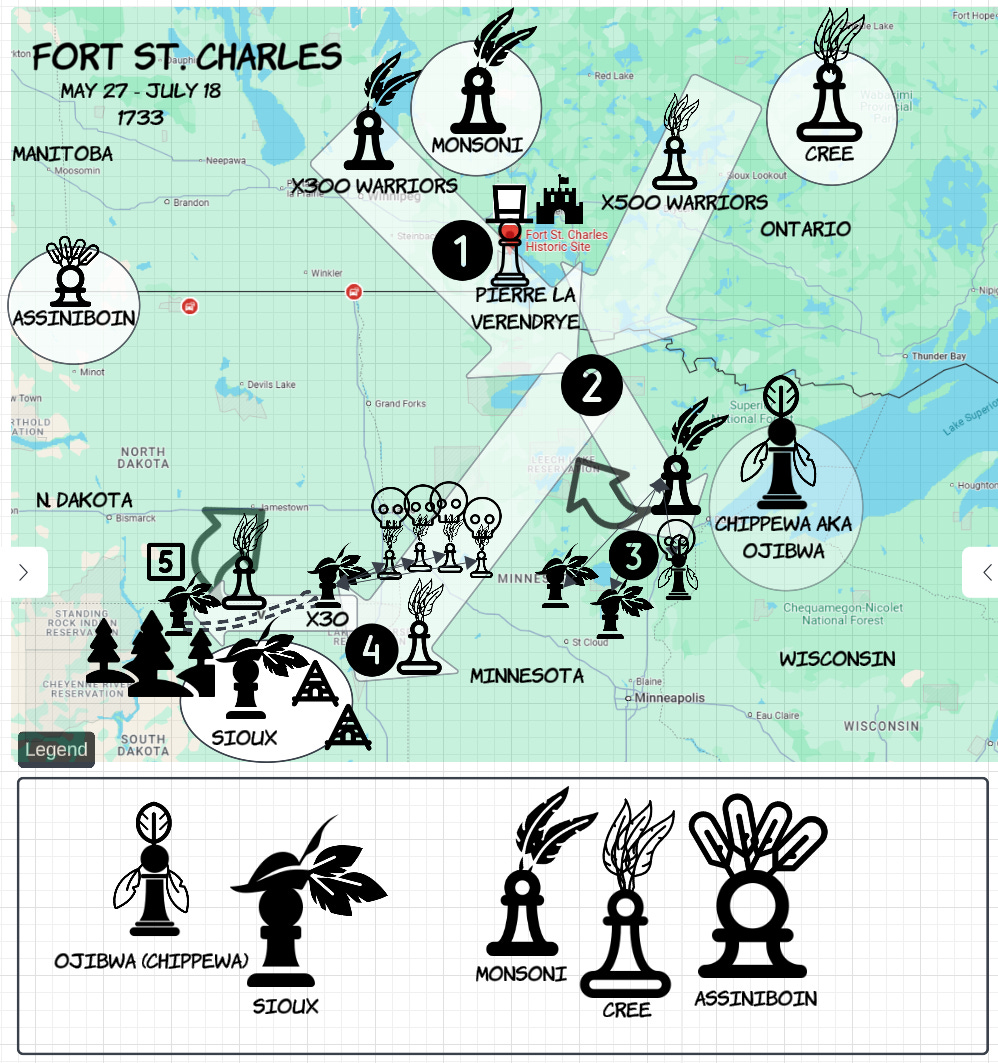Notes from Fort St. Charles, 1733
Roots of Pre-American Native Scan 'Da Navy Inland Conflict
The Mandans are … a light complected people, some had blond or red hair and blue eyes.
…
Peter Kalm, a Swedish traveler and contemporary of Pierre La Verendrye, told of an object La Verendrye said he picked up… It was a rock about one foot by four inches wide with an unknown script. La Verendrye said his men found it on a ruined pillar and there were many such pillars here and there in the wilderness. Verendrye said he gave the rock to the Jesuits, and the Jesuits identified the script as possible Tartaric (early Scandanavian). - Duane Lund. pg. 23, 24
This report, in journal form, includes all that took place at Fort Charles between May 27, 1733 and July 12, 1734. It is submitted to the Marquis de Beauharnois, Governor General of France, as prepared by me, La Verendrye…
The Sioux and the Chippewa (Ojibwa) have been at war since time immemorial against the Monsoni and the Cree, and against the Assiniboin. Both sides are continually forming war parties to invade one another’s territory…
The Monsoni and Cree divided themselves in two armies to march against the Chippewa at La Point and the Sioux of the Woodlands. - Duane Lund. pg. 37+
[1] The Monsoni, numbered over 300 warriors, arrived at Fort St. Charles en route to their raid on June 15.
[2] After meeting with La Verendrye at Fort St. Charles, the Monsoni continued on to the rendezvous point with 500 Cree warriors at the St. Pierre River.
[3] The 300 Monsoni travelled up the St. Pierre as far as a fork where they left their canoes, then entered the prairies where they met three scouts for a party of 100 Sioux and Chippewas. The Monsoni killed one of the scouts, the other two escaped. The 300 Monsoni then returned to Fort St. Charles to complain to La Verendrye about the Chippewa and Sioux.
[4] The 500 Cree warriors march for twenty days across the prairies to attack the Sioux. They find the smoke fires of a nearby Sioux village when 30 Sioux of the woodlands attack the Crees rearguard. The Sioux killed four Cree before seeing the size of the Cree war party, at which point the 30 Sioux fled and took shelter in a patch of woods.
[5] The stalemate lasted through a night until daybreak - when the Sioux and Cree talk a peace. The Cree return - marching day and night for 10 days back to Fort St. Charles, to meet with Valendrye, then return to their homes.
Notes
References
Lund, Duane R. The Indian Wars. Cambridge, Minn., Adventure Publications, 1995.





